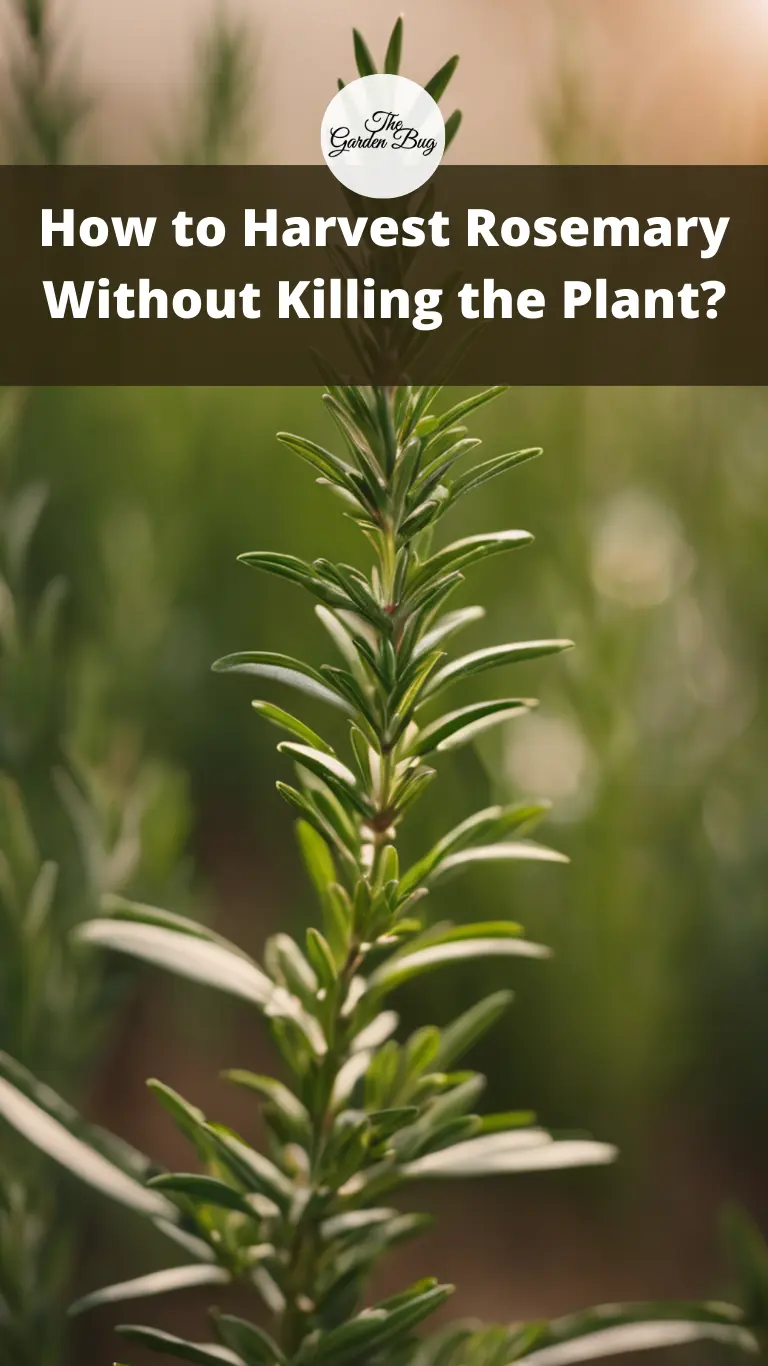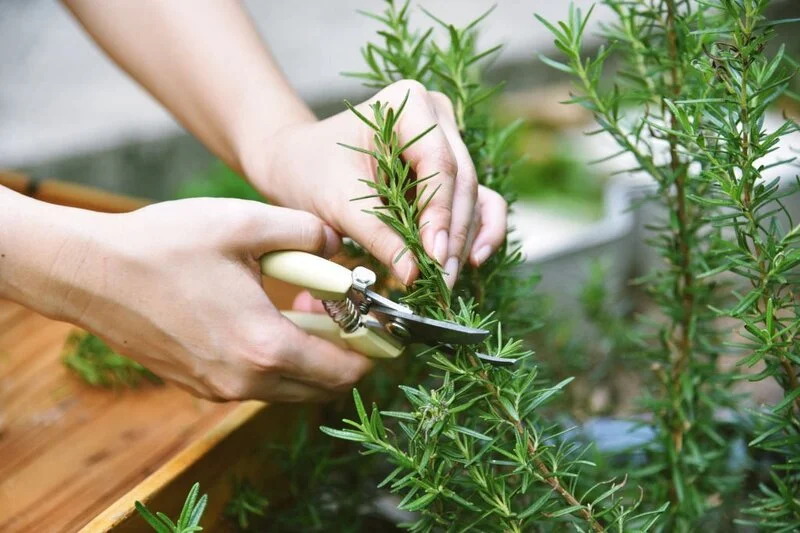Today, we’re diving into the enchanting world of rosemary, a herb that’s not just a culinary superstar, but also a garden gem. This amazing plant, with its delightful aroma and needle-like leaves, can turn any dish into a masterpiece. But did you know that harvesting rosemary is an art in itself? Let’s unravel the secrets together.
- Tuscan Blue Rosemary Plant Pot: Tuscan Blue Rosemary is an annual herb which features fragrant, grayish-green, needle-like leaves. Known for their edible as well as ornamental qualities, these plants are usually harvested from early to mid-summer.
- Indoor Plants: Tuscan Blue Rosemary plants produce beautiful, fragrant, deep blue to violet-colored flowers in bloom. This plant is also an ideal pick for a personal herb garden. The USDA hardiness zone for outdoor planting is 8–10.
- Easy Maintenance: Tuscan Blue Rosemary plants are easy to care for; they need full sunlight and temperatures over 30° F. A heat pack is included with each plant if your region experiences cold weather.
- Home and Garden Decor: Our Tuscan Blue Rosemary plant pot is perfect for windowsills, countertops, desks, and tables in your home or garden. The plant, which can grow up to 6′ tall at full height, is also a great gift option for friends and family.
- Health Benefits: Live plants purify the air in their surroundings and thus enable you to inhale clean, fresh air while also helping to boost mood levels. The plant is a non-toxic edible herb and is also safe for pets.
Understanding the Rosemary Plant
Before we start snipping away, it’s important to understand the rosemary plant. This Mediterranean native loves sun and well-drained soil, and it grows all year round in many climates. Its needle-like leaves are rich in aromatic oils, which are at their peak in the morning hours. That’s why it’s often best to harvest rosemary before the day heats up. But there’s more to this fragrant plant. As with many perennials, the way you harvest rosemary can impact its growth. So let’s move on to learn when and how to harvest rosemary without damaging the plant.
When and How to Harvest Rosemary
Harvesting rosemary is not only about the “how,” but also the “when”. The best time to harvest rosemary is in the morning when the dew has dried but the sun hasn’t heated the plant. During this time, the plant’s oils, which give rosemary its signature scent and flavor, are most concentrated.
As for the “how,” here’s the good news: rosemary is a tough plant that loves a good trim. However, there’s a simple rule to follow to ensure you don’t harm your plant: never cut more than one-third of the plant at a time. Start by identifying the branch you want to cut. Make sure it’s a healthy, robust one. Then, follow the branch to about two-thirds of the way towards the base, and make your cut. This method ensures your rosemary plant continues to thrive and grow, providing you with fresh, aromatic sprigs all year round.
Tools Needed for Harvesting Rosemary
For harvesting rosemary, you don’t need an arsenal of tools, just a good pair of garden shears or scissors. Make sure they are clean and sharp to make a neat cut and prevent any damage to the plant. If the tool is dirty, it could introduce disease to the plant, which we definitely want to avoid. After all, our aim is a healthy, flourishing rosemary plant, bursting with fresh sprigs ready for our next culinary adventure. So grab those shears, and let’s get cutting!
Step-by-Step Guide on How to Harvest Rosemary without Killing the Plant
- Identify a robust branch on your rosemary plant that’s rich in leaves.
- Track the branch about two-thirds of the way towards the base of the plant.
- Using your clean, sharp shears, make a swift cut. Remember, the idea is not to pull or tear the branch.
- Repeat the process with other branches if necessary, but avoid removing more than one-third of the plant at a time.
- After harvesting, you can use your rosemary fresh, or dry it for future use.
This simple method of harvesting ensures your rosemary plant remains healthy and vibrant, ready for future harvests.
Post-Harvest Care for Rosemary
After you’ve harvested your rosemary, it’s crucial to continue providing care for the plant. Keep watering and feeding it as per its regular schedule (remember, rosemary prefers well-draining soil and doesn’t like to be over-watered).
Monitor your plant for any signs of stress or disease. If the plant seems weak or wilting, it might be a good idea to ease up on the harvests for a while, letting the plant recover and grow back its foliage.
With the right care and attention, your rosemary plant will continue to thrive, offering its fragrant, flavorful sprigs for many seasons to come.
Common Mistakes to Avoid While Harvesting Rosemary
Harvesting rosemary might seem straightforward, but some common mistakes can adversely impact the health of your plant.
- Over-harvesting: Avoid removing more than a third of the plant at once. Over-harvesting can stress the plant, hindering its ability to grow back properly.
- Wrong timing: While rosemary can be harvested year-round, it’s best to avoid heavy harvesting during the coldest winter months. This can cause undue stress to the plant.
- Improper cutting: Use sharp, clean shears to make precise cuts. Tearing or roughly cutting the plant can cause damage, making it susceptible to disease.
- Neglecting post-harvest care: After harvesting, the plant needs extra care and attention to recover. Maintain its watering and feeding schedule and monitor for signs of stress.
By avoiding these mistakes, you can ensure a healthy, thriving rosemary plant that will continue to provide fresh herbs.
- New Liquid Fertilizer for: Lamiaceae- species like Lavender (Lavandula angustifolia, officinalis, vera, spica), Rosemary (Rosmarinus officinalis), Mint, Sage and Basil
- This food for plants belongs to the latest generation of fertilizers, for healthy leaves, strong formation and balanced rooting.
- Very rapid effects, can be administered via the roots and as a foliar fertilizer. For 60-125 liters of ready to use liquid fertilizer
- Content: 250 ml, works as an economical concentrate. Simple dosage with the help of the bottle cap.
- The fertilizers from the GREEN24 PROFI LINE were developed by gardeners of various departments and were evolved and produced based on the current knowledge in the field of propagation and cultivation of plants.
Conclusion
Harvesting rosemary is a rewarding experience, providing you with a fresh, fragrant herb that can elevate many dishes. Understanding the right techniques, knowing when to harvest, and giving your plant the care it needs will ensure a successful and sustainable harvest. Enjoy the wonderful world of homegrown rosemary!







